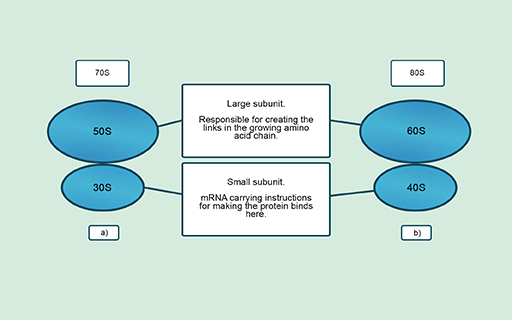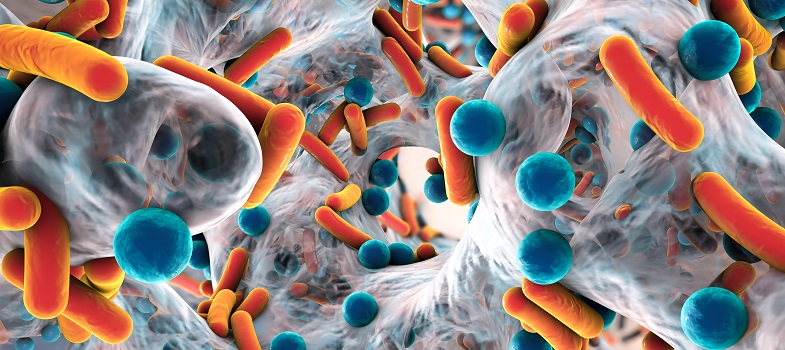1.4.2 Inhibitors of protein synthesis
Cells synthesise new proteins in ribosomes that are made up of one large and one small subunit. These subunits differ structurally and chemically between prokaryotic and eukaryotic ribosomes (Figure 11). These differences mean that antibiotics can target bacterial ribosomes but have minimal effect on the ribosomes of the host cell.

Figure 11 Ribosome structure in (a) prokaryotes and (b) eukaryotes. The Svedberg unit (S) indicates the size, shape and density of each subunit.
Show description|Hide descriptionThis figure shows the ribosome structure in prokaryotes (a) and eukaryotes (b). Part (a) shows the prokaryote 70S ribosome which is comprised of a large, 50S, and small, 30S, subunit represented as two blue ovals labelled 50S (top) and 30S (bottom). Part (b) shows the eukaryote 80S ribosome which is comprised of a large, 60S, and small, 40S, subunit represented as two blue ovals labelled 60S (top) and 40S (bottom). The large subunit of both ribosomes is responsible for creating the links in the growing amino acid chain. The small subunit in both ribosomes is where mRNA carrying the instructions for making protein binds. The Svedberg unit (S) indicates the size, shape and density of each subunit.
Several antibiotics that you may be familiar with, such as gentamicin, tetracycline and erythromycin, work in this way. Interfering with ribosome functions means that cells cannot produce essential proteins and will either die or be unable to replicate. Other antibiotics, such as fusidic acid, also inhibit the production of proteins by blocking different parts of the protein synthesis pathway.




